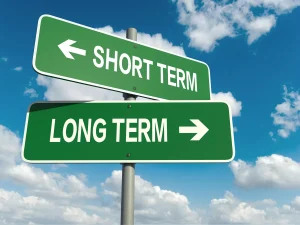Managing your finances effectively starts with understanding where your money is going. Expense tracking is an essential practice for anyone who wants to improve their financial health, achieve savings goals, or simply feel more in control of their budget. Without a clear picture of your monthly spending, it can be easy to overspend or neglect crucial financial obligations. Tracking your expenses allows you to make informed decisions, avoid debt traps, and build a stable financial future.
Understanding Your Income and Fixed Expenses
Before you can start tracking your expenses, it’s critical to understand your income and fixed expenses. Start by calculating your total monthly income from all sources. Next, begin listing your fixed expenses—these are the recurring monthly costs like rent, utilities, car payments, or insurance premiums. Knowing these constants will give you a clear understanding of how much money you have left for discretionary spending. This foundation is key to building a realistic framework for expense tracking and budgeting.
Methods for Tracking Expenses
There are several methods you can use to track your monthly expenses. Some prefer the traditional pen-and-paper approach, listing transactions in a notebook. Others use spreadsheets to categorize expenses and calculate totals automatically. Mobile apps designed for budgeting and expense tracking have become increasingly popular, offering easy-to-use interfaces and advanced features. Choose a method that suits your lifestyle and comfort level. Consistency matters more than the method itself—stick with what works best for you.
Analyzing Your Spending Habits
Once you start recording your expenses, the next step is to analyze your spending habits. Divide your expenses into categories such as groceries, dining out, transportation, and entertainment. Examine these categories to detect patterns and identify areas where you may be overspending. For instance, you might find that takeout meals are eating away more of your budget than you realized. Understanding these habits is the first step in making positive changes to better allocate your resources and achieve your financial goals.
Setting a Budget and Financial Goals
Expense tracking becomes truly powerful when paired with a personal budget and clear financial goals. After identifying your spending patterns, create a budget that ensures you’re spending within your means and allocating funds consciously. Also, set financial goals—whether it’s saving for a vacation, paying off debt, or building an emergency fund. When you track your expenses alongside these goals, it becomes easier to hold yourself accountable and measure your progress over time.
Utilizing Technology to Streamline Tracking
Technology offers countless tools that make expense tracking seamless. Budgeting apps like Mint, YNAB (You Need A Budget), and PocketGuard provide automated insights into your spending and even send alerts when you’re approaching overspending limits. Many of these platforms sync directly with your bank accounts and credit cards, reducing manual data entry and increasing accuracy. Harnessing these tools can save time and provide clearer insights into your financial situation, making expense tracking a less overwhelming task.
Dealing with Unexpected Expenses
Surprises abound in life, leading to the inevitable occurrence of unexpected expenses. Whether it’s a medical emergency, car repair, or unplanned travel, these costs can derail even the most well-laid financial plans. To prepare for these surprises, consider creating an emergency fund—a separate pool of money specifically meant to cover unplanned expenses. Regularly contributing a small percentage of your income to this fund can provide a financial safety net and reduce the stress of sudden financial shocks.
Reviewing and Adjusting Your Tracking System
Expense tracking isn’t a one-time activity—it’s an evolving process. Set aside time at the end of each month to review your tracking system and make adjustments if necessary. Maybe some categories need to be expanded or renamed to better reflect your spending habits. Perhaps you’ve discovered inefficiencies in the method you’re using and want to switch to an app or spreadsheet. Regularly reviewing your system ensures it remains accurate and aligned with your financial objectives.
Long-Term Benefits of Consistent Expense Tracking
The benefits of tracking your monthly expenses go far beyond immediate financial improvements. Over time, you’ll develop greater awareness of your money habits, allowing you to make smarter financial decisions effortlessly. Consistent tracking helps you stay out of debt, save for future milestones like buying a home or starting a business, and achieve long-term stability. People who track expenses tend to feel more confident and secure about their financial health, providing peace of mind that extends into other areas of life.
FAQs
1. Is tracking expenses time-consuming?
Initially, it takes some effort to set up a method and get into the habit, but once you start, it becomes a routine that only requires a few minutes a day or week to maintain.
2. Do I need a fancy app to track expenses?
Not at all! You can use whatever method works best for you, whether it’s a notebook, spreadsheet, or a mobile app. The key is to be consistent.
3. How often should I review my expenses?
For best results, review your transactions weekly and do a more comprehensive analysis at the end of each month.
4. What if I’m not good with numbers?
Don’t worry—many expense tracking tools are user-friendly and perform the math for you. Your focus should be on being diligent with recording your expenses.
5. Can I still track expenses with irregular income?
Yes! Focus on creating a baseline for your fixed expenses, and allocate irregular income toward variable costs and savings.



